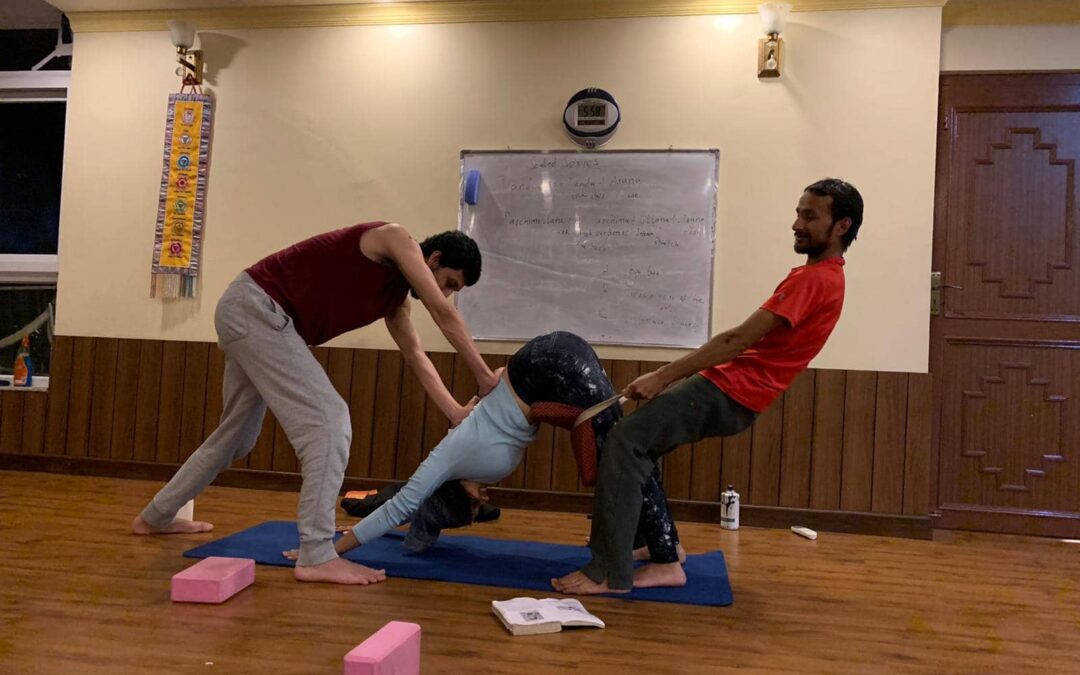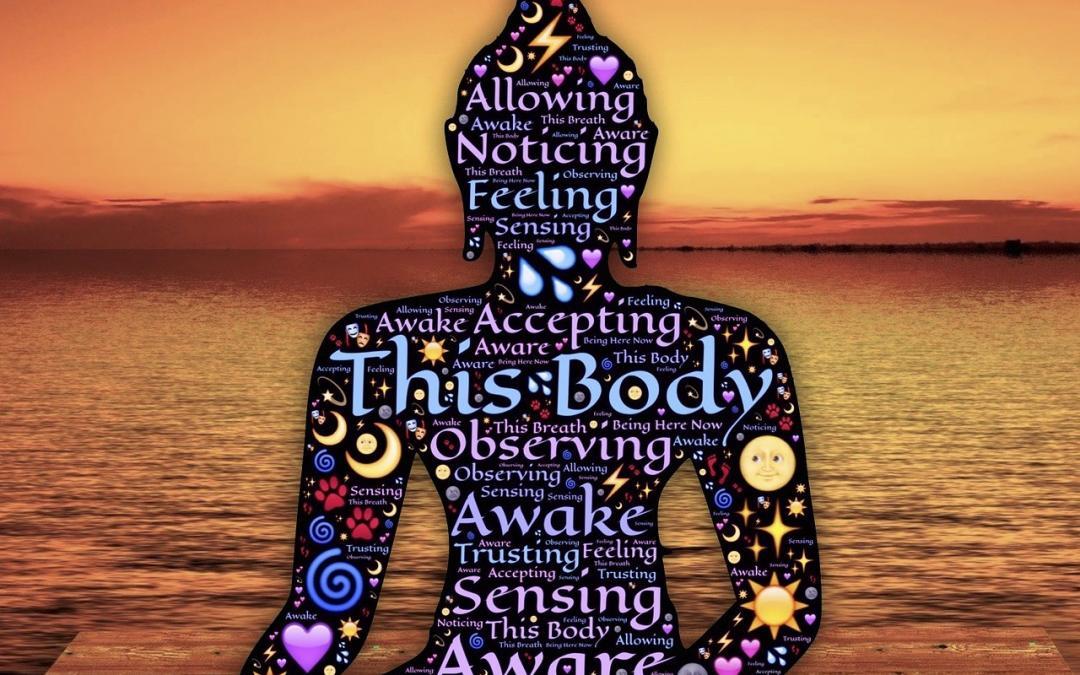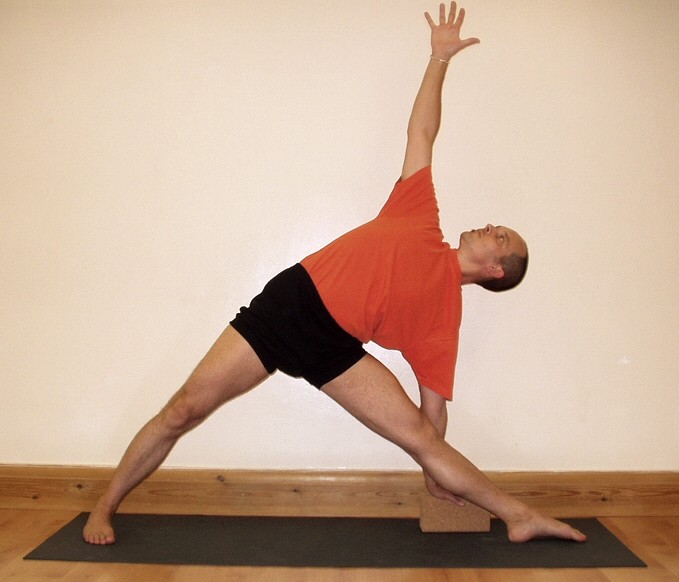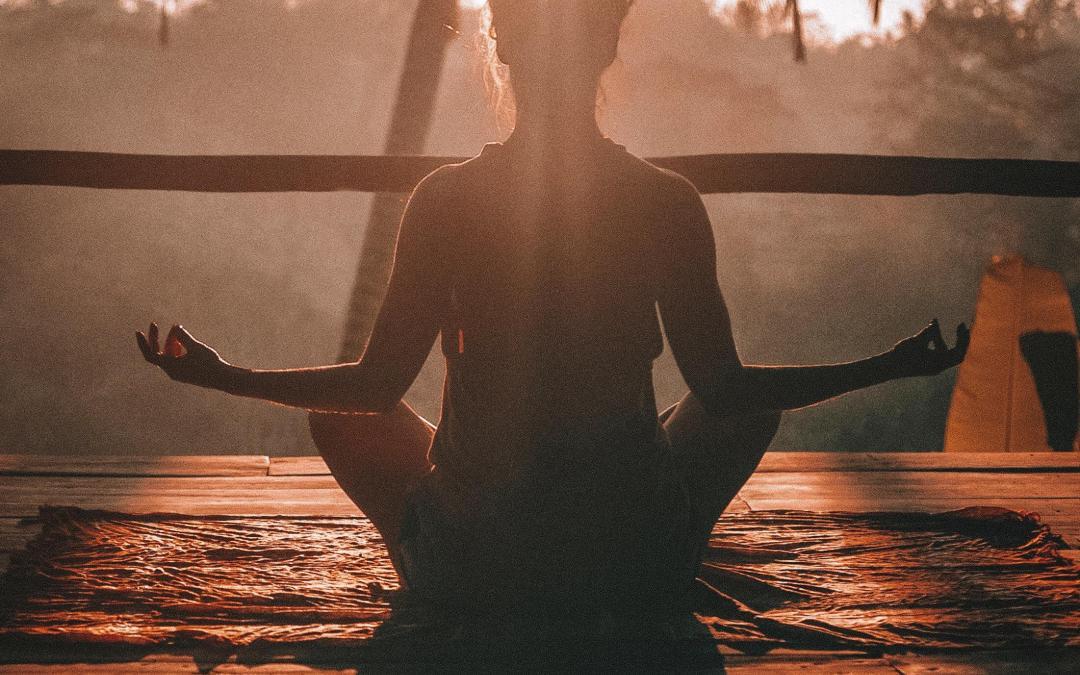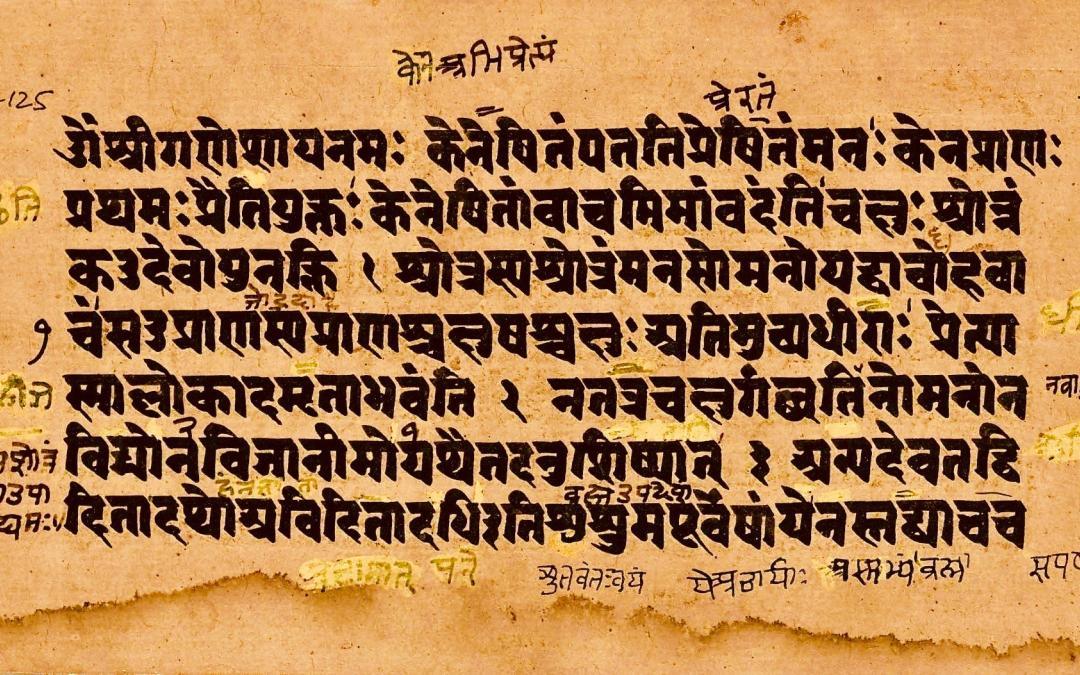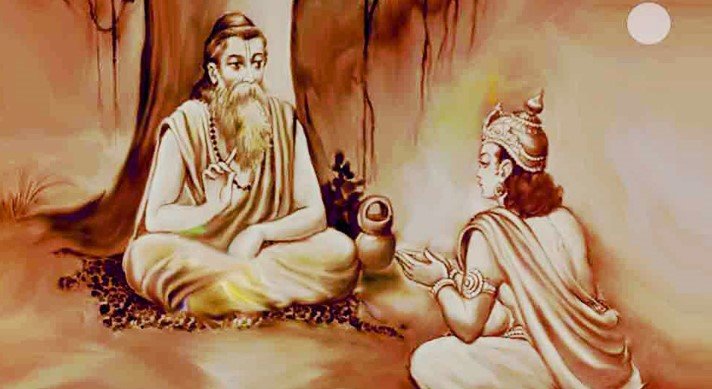
by Yoga In Nepal | Nov 20, 2021 | Yoga
Why learn Hatha yoga in Nepal?
Yoga learning is now available in many countries. Now, almost everyone can learn yoga. Most of the large and densely populated areas in the world surely have institute to learn yoga. Also, if nowadays if anyone has a good internet connection, they can learn yoga even on their own. This method is also widely popular and various online sources and teachers teach it very efficiently. There are many forms of yoga and technique also. When one sees yoga from outside it may only be postures and poses but it is more detailed than that. There are various forms of yoga such as Raja yoga, Karma yoga, Hatha yoga, and many more.
These yoga forms have various origins and are described in various books. Also, the learning of these yoga forms depends upon the location of the learning as authenticity and everything may depend upon it. People go to various places like Nepal, India to get higher knowledge in these forms and types. Talking about hatha yoga various people come are interested to learn Hatha yoga in Nepal and visit there to learn it from the gurus.
Hatha yoga
Hatha yoga is a very ancient form of yoga that is described in various ancient books. The oldest mention of Hatha yoga in the written text was found to be written in the 11th century Amrtasiddhi. It is a Buddhist text. In both the Hindy and Buddhist texts, the mention and description of Hatha yoga can be found. It is said that hatha yoga and its techniques were created by Lord Shiva himself. Shiva Shamita, Gheranda Shamita, Hata yoga pradipika are the remaining three original books on Hatha yoga.
It is believed that there were more but only these three classical are available now. The books are described in such a manner that, Lord Shiva and Goddess Parvati are talking and he is describing the yoga, hatha yoga, and other yoga forms in detail with its possibilities. When giving the knowledge to his wife Shiva has also warned that the knowledge of this purest form of yoga is not for everyone and this knowledge should be kept a secret.
Matsyendra is believed to be the founder of the Hatha yoga form of yoga. It is believed that Matsyendra was also the incarnation of Lord Shiva. He was one of the greatest yoga gurus to have ever been on to this earth. Later he was succeeded by his student Gorakhnath who was as accomplished as him in yoga. When talking about hatha yoga both are remembered.
Hatha yoga is one topic but if we get inside Hatha yoga we are going to find that there are two types of Hatha yoga:
- Yajnavalkya
- This consists of the eight limbs of yoga
- Kapila
- This consists of the eight mudras
Hatha yoga in Nepal
Hatha yoga is taught in many places of the world. However, still, people prefer learning Hatha yoga in Nepal. Hatha yoga is just an example people from around the world prefer to learn yoga in Nepal and India. Generally, not ordinary yoga practitioners but the masters who have dedicated their lives to master yoga and its secrets arrive here to learn more about the ancient techniques. Still, the place has roots in the ancient yoga and yogic methods which are not found anywhere else in the world.
Why hatha yoga in Nepal?
There may be several reasons behind why Hatha yoga in Nepal. Some may get here by chance or by the recommendations of other people. However, let us assemble the facts and logic behind the Why Hatha yoga in Nepal.
Following are the reasons for Why Hatha yoga in Nepal?
Origin of Yoga
The first reason why Hatha yoga in Nepal is because it is the place of origin of yoga itself.
Yoga was born in ancient India which is now present-day Nepal, India, and other surrounding countries. There is a myth and a fact behind the origin of yoga. The myth tells that yoga was gifted to humans by the gods. Similarly, the technique of meditation and the knowledge of Ayurveda was also the gift of the gods to humans. May it be true or not, maybe the techniques were developed by humans in time. One after another and generation after generation contributed to making yoga what it is now.
Whatever the case may be one thing is certain Yoga originated in this very land. Maybe it was gifted by the gods to the humans or maybe it was made by the humans. Whatever the case it is the product of this very land and the connection the yoga has in this land will be hard to match in any other place in the world so people come to learn Hatha yoga in Nepal along with other forms and techniques of yoga.
Sanskrit texts
Ancient yoga texts were written in Sanskrit. (Sanskrit is the ancient language of the South Asian region, which is believed to be the oldest system of language). Many people do not know Sanskrit. Even the people who have roots in Nepal or are currently living there do not know the language. Only the selective people know about Sanskrit and are fluent in them. People arrive in Nepal to learn Sanskrit and want to communicate with the ancient texts of the Hatha yoga themselves. This is also the reason people want to learn Hatha yoga in Nepal.
The three classics on Hatha yoga
This also is the reason people want to learn hatha yoga in Nepal. There is a total of three surviving classical books on Hatha yoga which were written many times ago and have been made to this modern world. Shiva Shamita, Gheranda Shamita and Hata yoga pradipika. They are the purest knowledge of Hata yoga. The book is now available everywhere with the help of the internet. However, just reading is not enough to understand that ancient knowledge. That is why people want to study Hatha yoga in Nepal. They want to understand the classical and they know that they can utterly understand it here.
Serene environment
Hatha yoga in Nepal or any other form of yoga the basic requirement for yoga is a peaceful and serene environment. Nepal is known in the world for its beautiful natural resources and scenery. Yoga as much depends on the surroundings as it depends upon yourself. Hatha yoga in Nepal is best as Nepal has such amazing places and destinations to practice yoga. Want to practice Hatha yoga deep in the forests Nepal has it, want to practice it in the high Himalayas they also have it.
In ancient times also when sages or gods wanted to perform the activities such as yoga, meditation, or other self-purifying acts they sought serene places mountains, and beautiful forests. The greenery and peaceful environment affect the psychology of the person itself and subconsciously makes them calmer and accepting. The serene environment may convince people for Hatha yoga in Nepal.
Hinduism and Buddhism
Hatha yoga not only belongs to Hinduism but to Buddhism also. This also may be the reason for Hatha yoga in Nepal. The first written mention of Hatha yoga ever to be found is in the Buddhist text in the 11th century. Hatha yoga is the product of both Hinduism and Buddhism there is no doubt about that. Also, Nepal is the country that is the perfect harmonical combination of the religions Hinduism and Buddhism. One who wants to understand Hatha yoga to the depth must understand Hinduism and Buddhism to some extent as well and where else to learn that except Nepal. That is why people choose Nepal for hatha yoga.
The gurus and experts
This land has produced many gurus, sages, and experts in the yoga field. Many people are involved in the field of yoga. Some people even have dedicated their entire life to know about Hatha yoga and other forms of yoga. The depth of their knowledge and skill in the field of hatha yoga is unparallel. They had amassed a great amount of knowledge from ancient books, texts, and scriptures. They had learned from their gurus and the masters before them. The skill and technique they have are nowhere in the world so Hatha yoga in Nepal.
Valuable knowledge and certificate
The world of yoga is ever-growing. New yoga techniques are being discovered; the lost ancient methods are being re-discovered. People are getting increasingly involved in yoga. It is no wonder that people also want to build their careers in the yoga field. They want to start their career in Hatha yoga also.
It has a good scope and people can expect good living standard from it. However, to do that also and to build a solid career people will need good and valuable certificated that guarantee their proper learning and amassing vast knowledge regarding the related field. The yoga certificates of Nepal are considered very valuable around the world. That is why people want to learn hatha yoga in Nepal and other forms of yoga in Nepal also.
Best Hatha training and retreat centers
A considerate amount of people are involved in this sector of Nepal. Various places provide teacher training for Hatha yoga in Nepal. They are very dedicated to their work and provide the best to the people who come to learn from them. They not only provide the hatha yoga retreat but also give Hatha yoga teacher training by which one can be a teacher himself of this art of yoga.
To be a yoga teacher one needs to have mastered the many disciplines, just amassing a vast amount of knowledge is not enough to be a teacher. The Hatha yoga teacher training and retreat centers give the best knowledge and training which people can use anywhere in the world. To get authentic knowledge with such good services is amazing. That is why hatha yoga in Nepal.
Passing of generation to generation
Nepal is a source of hatha yoga knowledge that may not be found in texts and the internet. Passing the knowledge in the written form is one method of passing information from one generation to another. However, there was also the tradition of passing the knowledge and techniques in the practical and verbal form. Some knowledge and techniques may not have made it to the outside world also.
Some sages have gained the knowledge from the masters and will pass to another student nothing more or less than that. By coming to Nepal, one may even fill the missing gaps that people did not know were there in the first place. That is why Hatha yoga in Nepal.
Connecting to the past
Hatha yoga is ancient knowledge and technique there is no denying this fact. The technique was created hundreds of years ago and through this and that by many methods were passed from one generation to another. Now, through the dedication of many people, it has reached here. However, in this passage of time, many techniques, and methods of hatha yoga or the main yoga may have been lost. It is only natural for the dispersion of knowledge by the passage of time. Also, we are not talking about the passage of mere few years.
We are talking about hundreds and maybe thousands of years. The knowledge we have now may have many blanks left. Looking logically, it is nearly impossible to regain the knowledge that has been lost. However, there may be one last hope to find that lost knowledge which is Nepal itself. The knowledge originated here and there may still be some traces of it left if one looks for it hard enough.
Some individuals are researching Hatha yoga. They are already masters and know very much about it. However, they want to expand their horizon of the hatha yoga they know and find out the knowledge that may have been lost. It is not easy to find what may have been completely lost and nearly impossible for the average individual. However, for the masters who have dedicated their entire life to the learning of the Hatha yoga can. The gurus come to Nepal to research and find more about the past by reading books, deciphering scriptures, and many other things.

by Tirtha Acharya | Mar 3, 2020 | Meditation
Vipassana The Buddha Style of Meditation
The literal meaning of Vipassana (Vipasyasana); ‘Vi’ means “in a special way” and ‘pasyana’ means “to see, observe”. So Vipassana means “to see observe in a special way”, “to perceive the things as it is”. It aims at seeing the things or situations in reality without any illusion or delusion. Vipassana tries to seek the truth. The explanation of Vipassana is given in Buddhist literature. The original literature regarding Vipassana, are in Pali language. It is somewhat similar to the Sanskrit language. Theravada tradition insights the three marks of existence: impermanence, suffering, and realization of non-self.
- “Impermanence (Anitya)” means everything in this world is temporary. No situation or matter remains permanent. Everything keeps changing.
- “Suffering (Dukkha)” is found everywhere in the world. People may illusioned by seeing pleasure. In fact, the world is full of illusion. However, Lord Buddha has given the techniques to get rid of sorrow.
- “Non-self (Anatma)” is an important reality. A person identifies himself with the situation or sorrow. Whenever he realizes that he is unattached to situations, events, misery, etc; then he can live a perfect life.
From The Meditation Buddha discover ultimate reality:
- There is sorrow in life.
- There causes of sorrow.
- There is a path to eliminate sorrow.
- Arya-astangik Marga ie “Eightfold noble path” is the way to eliminate sorrow.
Vipassana meditation was the technique for the Buddha to attain enlightenment. It is an ancient technique through which many people got enlightenment in the period of Buddha. This meditation has two bases:
o Consciousness on respiration
o Consciousness on body sensation.
And the purpose of being conscious is to create equanimity. So, Vipassana is also termed as “Samatha Meditation”. As it requires awareness, consciousness, it is also named as “Mindfulness Meditation”. Thus this meditation requires mindfulness and equanimity. Lord Buddha had discovered this meditation technique. He became fully enlightened at the age of 35. Then he started to teach this meditation to the mass of people.
For the practice of Vipassana meditation, a meditator sits for meditation and begins with the awareness of respiration keeping the torso straight and unmoved. The eyes are closed so that mind does not wander on external things. His backbone and head neither should lean frontwards nor backward. One must be at the present for the perfect practice of meditation. If the body is crooked forwards, the mind tends to shift to past experiences and thoughts. Similarly, if the body is leaned backward, the mind tends to fly with future imagination and thinking. So the alignment of the body must be straight to practice meditation.
Now, the meditator observes his inhalation and exhalation. Sometimes it may happen that the mind cannot identify the breaths. If so, he needs to inhale and exhale with his own effort. It makes to feel the breaths. Doing this he starts knowing the breath. Gradually, he starts knowing natural and spontaneous respiration. If the breath is faster, he just knows that the breath is faster without any judgment and reaction. If the breath is slower, he just knows it without any reaction and judgment.
The purpose of meditation is to get reality. If one starts to judgment or reaction then he misleads the path. When the meditator starts observing the breath, it becomes subtler and subtler. Sometime it may happen that breath has stopped for some moment. Whatever it may be one should just know the incoming and outgoing respiration. If it is inhalation, know it as it is. If it is exhalation, know it as it is. Never try to shift from reality. The mind is linked to respiration. So, this helps to explore the mind. Observation of respiration is a primary phase of meditation.
After this, the meditator starts observing the sensation of the body. He observes the sensation of the whole body from the top of the head to toes and vice-versa. Again, the meditator may experience different types of sensation like pain, pleasure, heat cold, perspiration, etching, tickle, pressure, soft, rough, vibration, etc. Whatever the types of sensation there may be, but the meditator should not generate any attachment or aversion to it. He should neither judge nor react on it. Just know the reality. Judgment and reaction are the barriers of the truth. Neither be happy with pleasure nor be sad on pain. They both are ephemeral. Never identify yourself with them.
The self is always unattached and free from all the bondage. Whatever the element is in the universe, those all are within the human body. So, knowing the element within the framework of the body one can understand the reality of the entire universe. Just with the study of the self, one can realize the whole world. Being mindful of the sensation of the body one starts understanding the reality. One can understand the law of nature. One can understand the principles of mind and matter. During the meditation, the mind may go in past and sometimes in future. We have nothing to do with past and future as these are not in our hands.
We are gifted with the present. So, we always try to remain on the present without dwelling on past or future. Whatever is being happened on respiration and sensation, we just become concentrated on it. Our work is- only knowing, feeling, or realizing in an equanimous manner. This activity gives the knowledge of mind and matter. As we understand the mind and mater including its law; we surpass across it. We transcend the physical world. Then we will realize these are changing, non-self, and sorrow. After this, we start knowing the metaphysical world.
After knowing the world of changing, non-self, and sorrow; we will know that world which is beyond sorrow and beyond changing. Continuous practice leads to ultimate truth and enlightenment. There are many paths that lead towards enlightenment. But the history and religious literature have shown that there were a maximum number of people who attained enlightenment at the period of Buddha through the practice of Vipassana.
For the Vipassana meditation, one-hour sitting is necessary, twice a day- morning and evening. In other times he works everything being conscious and mindful. He eats being conscious on breaths or the sensation, he moves being mindful, he sits being mindful, he speaks being mindful. Whatever he does, they all are done being mindful. He becomes conscious of his thoughts. So he is the master of the self.
Some of the people practice Vipassana meditation to get the health benefit. But practicing Vipassana meditation with aim of health is not good. Curing the various diseases, even HIV AIDS (scientific research has already discovered it) will be cured by this meditation, providing ultimate health is a byproduct. The aim always should be enlightenment, not health. For example- rice cover is byproduct while grinding the rice. So health is byproduct on the path of enlightenment. Nowadays the original technique of Vipassana is taught in the Vipassana center started by SN Goenka. It is taught in more than 50 countries with free of cost.

by Tirtha Acharya | Feb 10, 2020 | Yoga
In Sanskrit language, Utthita means extended and Trikona means triangle. Utthita Trikonasana means an extended triangle pose.
Steps to do Utthita Trikonasana
1. Stand in a straight pose like in Tadasana.
2. Slowly jump your legs about 4 feet. Set your arms parallel to the floor.
3. Turn your right leg in 90 degrees and set your left leg 45 degrees.
4. Set your left hand on the left ankle and shin.
5. Stay in this pose at least for 15 minutes.
6. Do the same process from the right leg.
Benefits of Utthita Trikonasana
1. It can improve the digestive system of our body.
2. It helps us to be rid of the stress.
3. It is helpful to the people who have an infertility problem.
4. It strengthens all the parts of our stomach.
Precautions
1. You don’t have to do this pose if you are suffering from diarrhea.
2. You should avoid this pose if you have a headache and low blood pressure.
3. If you have the heart problem, neck pain and high-blood pressure you have to apply special precautions while you do this yoga. For that, you have to consult with your yoga teacher.

by Tirtha Acharya | Feb 10, 2020 | Yoga
Ashtanga yoga includes 8 different parts: Yama, Niyama, Asana, Pranayama, Pratyahara, Dharana, Dhyana, Samadhi. Ashtanga Yoga provides you a detail pathway of 8 karmas that we need to practice as a yogi and practioner of yoga.
Ashtanga Yoga Retreat at NYTT & RC
If you have got a holiday, then this is an ideal place to spend your holiday. This course will be proved to be fruitful throughout your life. If you are conscious of your health and fitness then spare your time with us at least once in a year. This two weeks yoga retreat is fit for all. The beginners will learn a new dimension of life to live happily and harmoniously.
If you are unhealthy or have some health problem then you will get the technique to eradicate your problem without the help of doctor and medicine. You will discover a path of healthy living. If you have already attended some yoga class in previous, then you will expand your knowledge.This retreat will help to deepen your practice. It also welcomes an advanced level of yoga practitioner because this is the place of Yoga to give you spiritual realization through the practice.
This is a favorable place to uplift your realization. This place is situated at the lap of Nagarjuna-Sivapuri National park. So you can enjoy the greenery of the forest. The atmosphere is pure and free from the noise. You can view the entire city from here as it is at a height. The natural lifestyle of this place will be proved to be a boon for yoga practice. This course boosts your energy level and recreates your mental ability.

Ashtanga Yoga Parts:
Here is the brief explanation of Ashtanga Yoga 8 parts which is you will get in Ashtanga Yoga Retreat
Yama (Universal moral commandments): You will learn the importance of morality in the society and its contemporary aspects.
Niyama (Self-discipline and purification): You will learn to be loyal and honest with the self.
Asana (Yoga-postures): You will get information about 84,00,000 asanas and learn more than 100 asanas on a practical basis.
Pranayama (Control, conscious and cessation of breath): You will learn the art of breathing. What the breath actually is, how it is regulated and mastered, etc. are taught.
Pratyahara (mastery of the mind): Mind can be mastered after mastering the breaths.
Dharana (concentration): You will learn how to focus on a particular object.
Dhyana (meditation): You will learn different types of meditation techniques. Especially, mindful meditation is given priority.
Samadhi (Super-conscious stage): This is the highest level of yoga. You will learn its theoretical aspects.
In Ashtanga Yoga Retreat ,the teaching will be on both a theoretical and practical basis by an experienced teacher. After the completion of the course, you will feel that your life has been changed. You will really be pleased with the techniques that you learn here. You will find a mystery in your life. You will feel that life is a blessing. You will be guided in every step for your get betterment.

by Tirtha Acharya | Feb 10, 2020 | Spirituality
Upanisad- 13 main parts of Vedas
The origin of Hindu philosophy is Veda. There are four Vedas: Rig Veda, Sama Veda, Yajur Veda, and Atharva Veda. Each Veda contains four layers of text: the samhitas, Brahmanas, Aranyakas, and Upanisad. Each of these layers has varieties of combinations, however, Samhitas broadly comprises hymns praising Gods. The Brahmanas basically concerned with describing and elaborating Vedic rituals.
The Aranakas and the Upanisad are based on rituals while some sections of it deal with the intellectual and philosophical matters. The Upanisads are also stated as “the fourth and final chapters of Vedas” and reflects the highest purpose of Vedas. These Vedas have different parts. There are 13 main parts of Vedas which are termed as the Upanisad or the Vedanta. They are as follows

4 Different Vedas which includes Upanisad
Rig Veda
Rig Vada has three main Upanisad:- Aitareya, and Kaushitaki. Rig Veda has 1028 hymns and 10600 verses, organized into ten books, called Mandalas. The hymns are devoted to deities and have discussed cosmology. The origin of the Universe and Nature of God, the importance of Charity, and other metaphysical issues are the main interpretation of this text.
Sama Veda
Sama Veda has two main Upanisad:- Chandogya and Kena. This veda is known as Vedas of melodies and chants. Varieties of music, chants, songs, dances etc are the products of Samaveda
Yajur Veda
Yajur veda is the Veda of prose mantra. It has six main Upanisad:- Brihadaranyaka, Isha, Taittiriya, Katha, Kshvetashvatara, and Maitri Upanisad. Basically it has two groups: Black (Krishna) Yajurveda and White (Shukla) Yajurveda. The word ‘Black’ implies “unclear, unarranged, variegated” collection of verses while ‘White’ implies just opposite meaning “clear, arranged, congruent”. It consists veneration, worship, sacrifice and its prayer, particularly mantras etc.
Atharva Veda
Atharva Veda has three main Upanisad:- Mundaka, Mandukya, and Prashna Upanisad. This veda is a guideline in the everyday life. It is composed of 730 hymns and 6000 mantras, divided into 20 books. Atharva Veda covers varieties of topics like magical mantras for all types of healing, sorcery, worldly attainment and richness etc.
The original language of the Upanisad is Sanskrit, containing the central philosophical ideas and concepts of Hinduism. Some of the concepts are shares with Buddhism, Jainism, and Sikhism. It has a key role in the progress of spiritual ideas, making amendment from Vedic style into new ideas and concept. The concept of enlightenment, ultimate truth (Brahma), supreme-soul (paramatma), soul (Atma, the self), karma and yoga, a theory of Karma, worldly existence, purusha (person), prakriti (nature), physical and metaphysical issues etc. are the main theory of it.
Besides, it consists ritual context, a foundation of life, what happens at the time of death, ways of life, the process of life and death, ways of interacting with other, nature and reality, working of the body, what is hell and heaven, what is Universe etc.
It includes vast range including explanation of ritual actions, creation of myths, mysticism, magical and supernatural formulae, genesis of ceremony, explicative conversation about popular teachers, students and royal families, ordering of teachers and disciples, There are more than 200 Upanisad known, out of which first thirteen are considered as main Upanisads. It plays an important role to develop a discursive and intellectual language.
It has raised philosophical debates and questions by revealing different factors of attaining knowledge, including synthesis, analysis, comparison, deduction, introspection, retrospection etc. Among six Hindu Darshanas- Nyaya, Vaisesika, Mimamsa, Vedanta, Samkhya and Yoga; first four do not follow chronology above but they all matter all the vedic Upanisads as Sruti (a timeless revealed knowledge). Rest of the two Darshana Sankhya and Yoga are normally regarded as supporting the vedas.
The fundamental Upanishads were inscribed from about 900 to 300 BCE. The inscription of other different minor continued. It has been found that hundreds of other texts with the name ‘Upanisad’. Although test denoted as ‘Upanisad’ have been continued to compose up till the present time, the majority of the texts were composed between the 2nd and 15th centuries. Scholars have set these books in different groups corresponding to common themes, such as Saiva Upanisad ( Upanisad on Lord Shiva), Yoga Upanisad, Vaisnava Upanisad (Upanisad on God Vishnu), Samnyasa Upanisad (Upanisad on renunciation) etc.
Some Topics Covered by Upanishad
Among the widely discussed topics in Upanishad, Atma (Soul, the self) is one of the most important topics. The lexical meanings of Atma have covered a broad range including ‘breath’, ‘spirit’, and ‘body’. After the evolution of Upanishad, its meanings elaborated in various words like- an essence, a life-force, consciousness, energy, or ultimate reality.
A well-known teaching has been found in Chandogya Upanishad. A character, Udayakala Aruni, explains to his son Svetaketu that one can know Universal material substance from particular stuff. For example- by means of something made up of clay, one can know clay entirely; by means of an ornament made from gold, one can know the gold; by means of a needle; one can know iron etc
Objects are not created from anything but transform from one matter to another. Creation is influenced from ‘Satkaaryavaada’ theory which means the theory of cause and effects. Udayakala continued his explanation comparing a series of conclusion with experimentally observable natural process to reveal that the self is a metaphysical schema present in all living beings.
For that, he used honey as an example. Bees collect it from the different sources and gather together to make an undifferentiated whole. Similarly water flowing from different rivers and cannels form the ocean without and distinction. The banyan tree cannot be seen in the seed.
The dissolved salt in the water cannot be seen. Likewise, the self, pervaded in the human body cannot be seen. The phrase “you are that” (tat avam asi) is frequently used by Udayakala to explain that the soul (self) actuates the same way in him as it operates in all creatures.
The self is both tenor that connects the part with the Absolute and the eternal that remains static even while taking different forms or shapes. In this way, Udayakal explains about the self to his son as a life force that animates all creatures. Thus, the various subject matters have been discussed in Upanishad.
